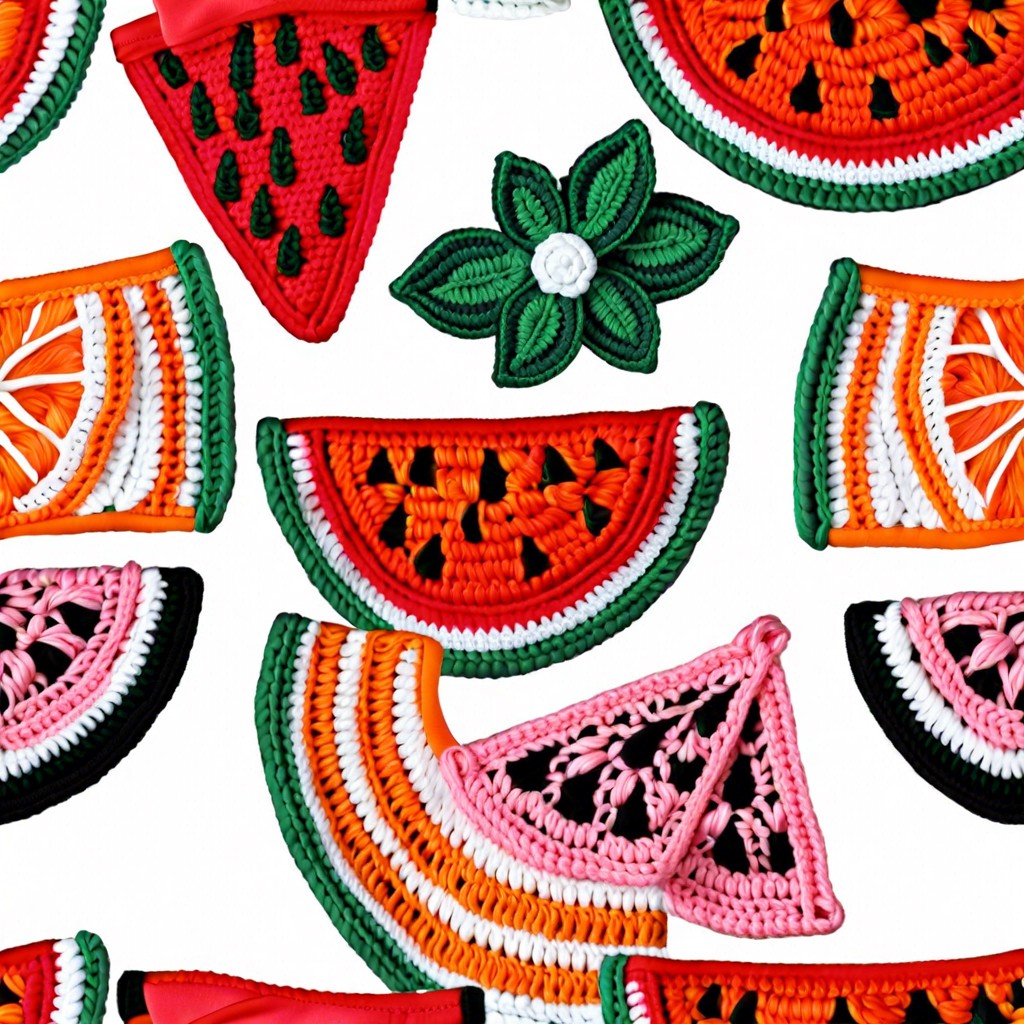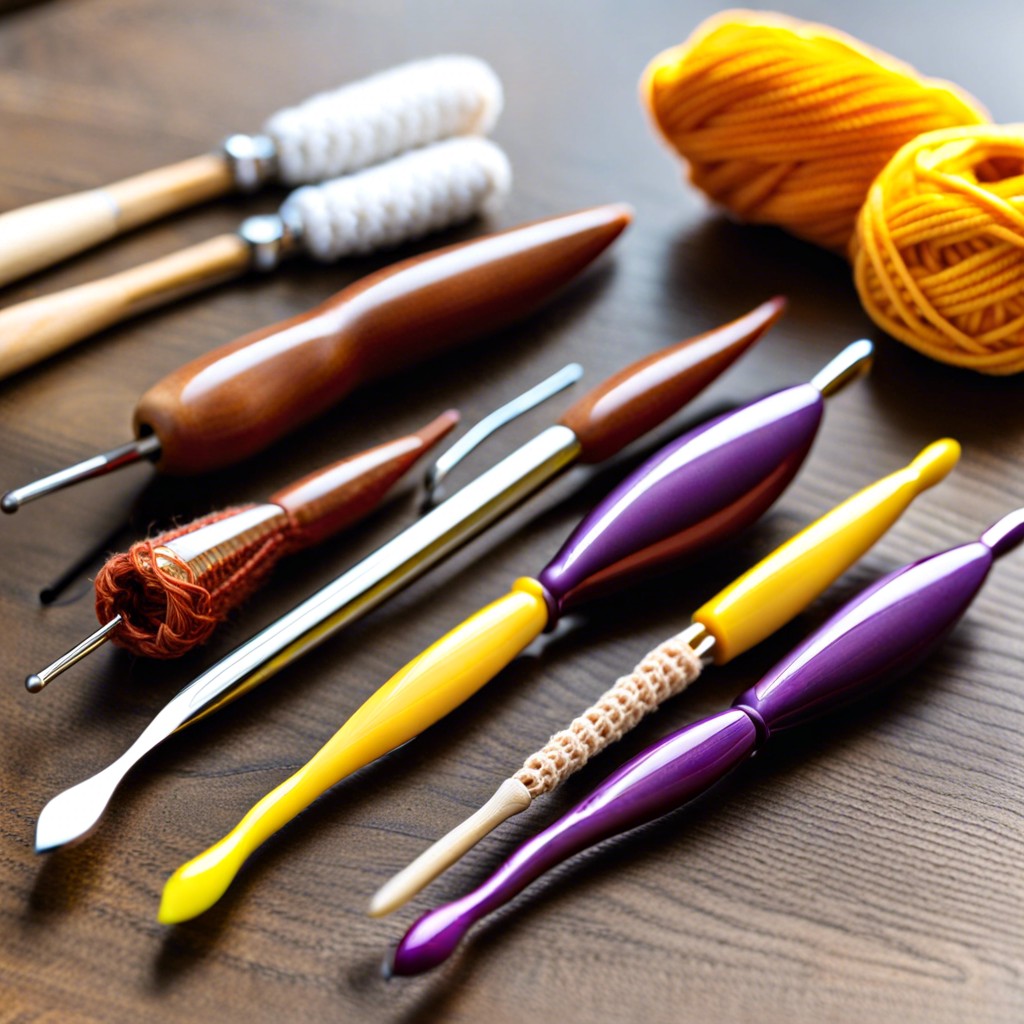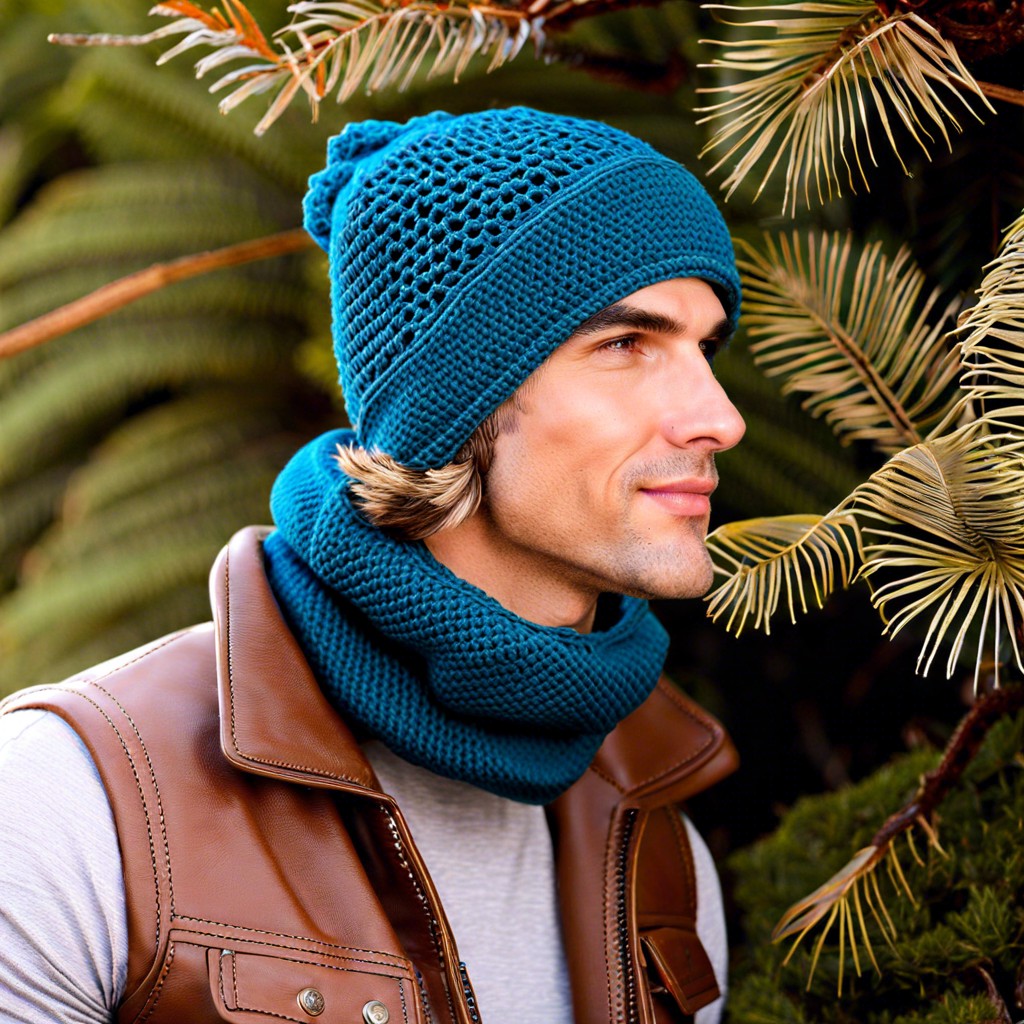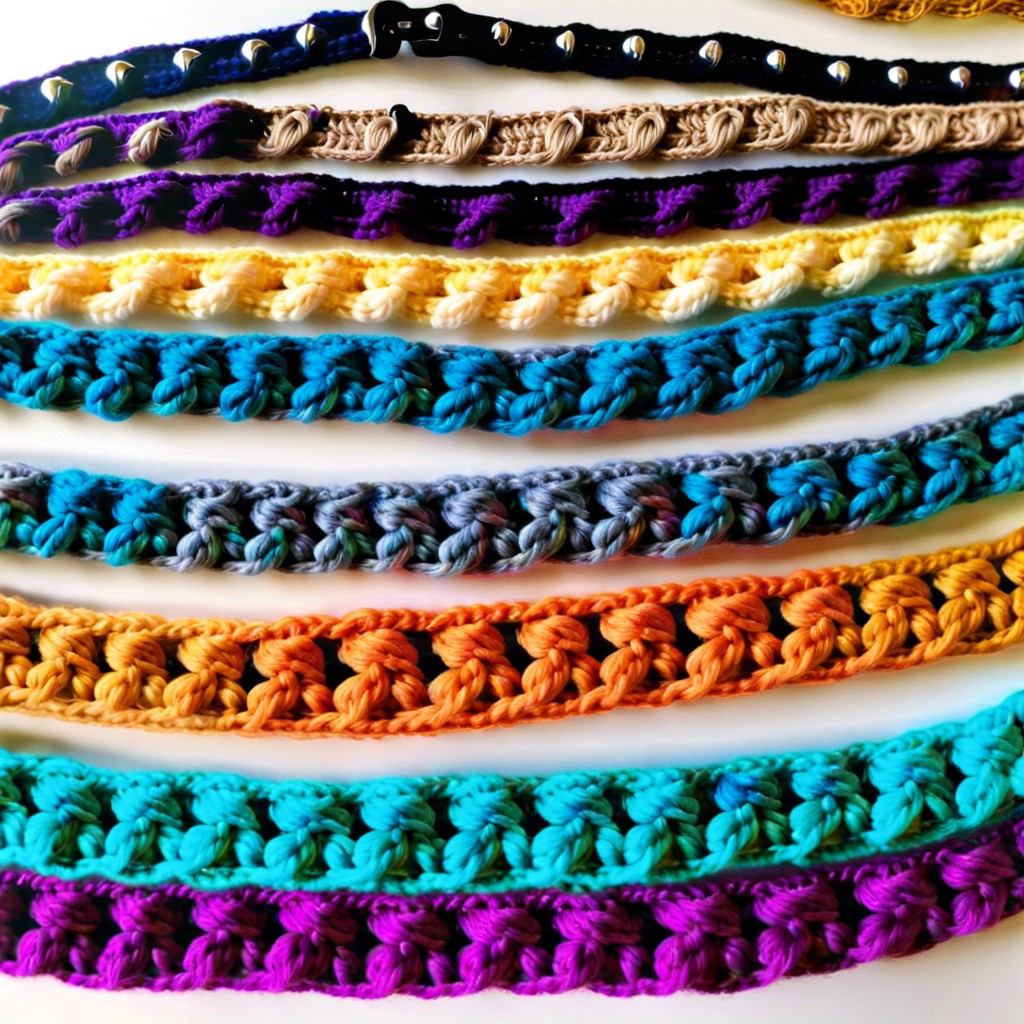Discover the fascinating world of crochet hooks as we explore their various types, materials, and unique features to enhance your crocheting experience.
Crochet hooks are the backbone of every crochet project. They come in various sizes, shapes, and materials.
Choosing the right hook can make or break your project. As a crochet enthusiast, I have tried and tested different types of hooks and have discovered their unique features and benefits.
In this blog post, I will be sharing with you everything you need to know about the different types of crochet hooks available in the market today. Whether you are a beginner or an experienced crocheter, this guide will help you select the perfect hook for your next project! So grab a cup of coffee, sit back, relax, and let’s dive into the world of crochet hooks!
Material Composition
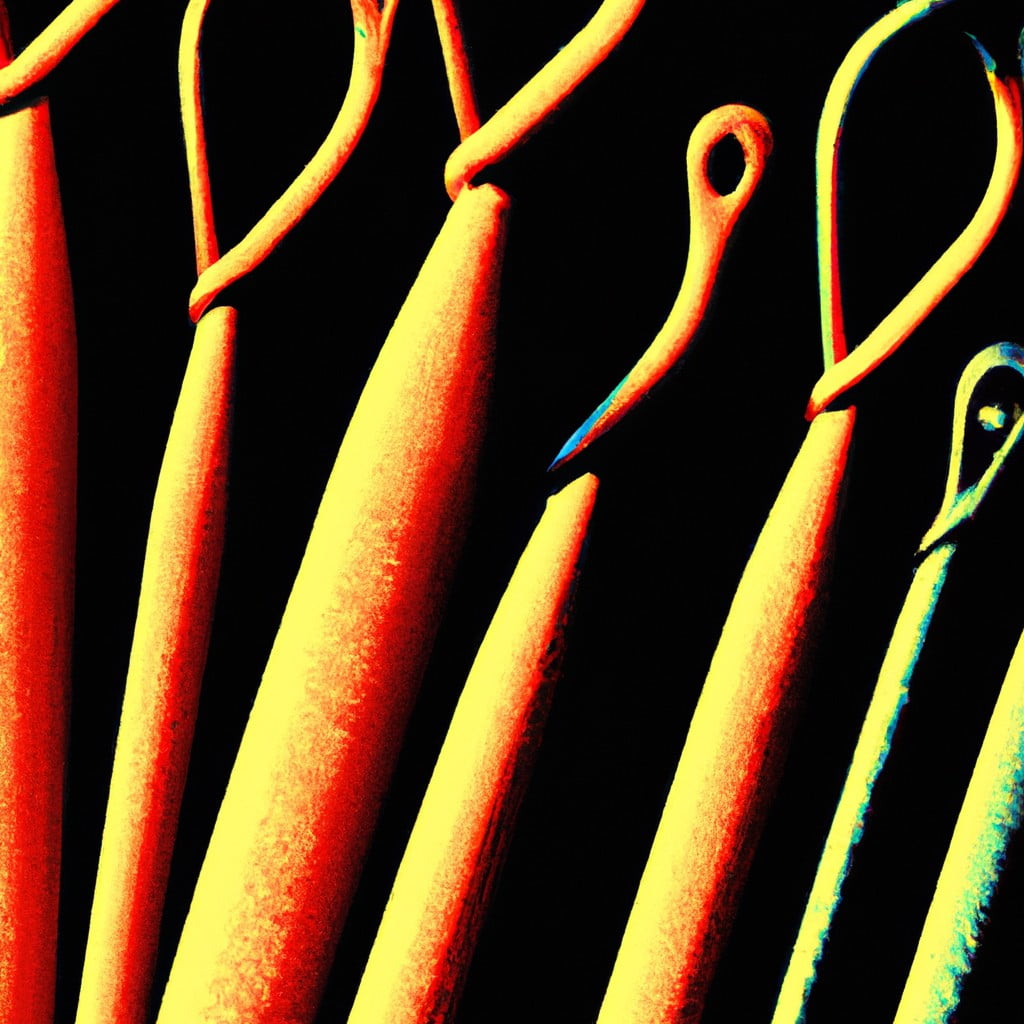
Material Composition: Crochet hooks come in different materials, each with its unique features and benefits. The most common materials used for crochet hooks are wood, plastic, and steel.
Wooden crochet hooks are popular among crocheters because they provide a warm feel to the hands while working on a project. They also have excellent grip properties that prevent the yarn from slipping off the hook.
Plastic crochet hooks are lightweight and affordable compared to other types of material composition. They come in various colors making them an attractive option for beginners or those who want to add some color into their crafting tools.
Steel crochet hooks have been around for centuries; they were once made entirely of metal but now feature ergonomic handles made from rubber or plastic material that provides comfort during extended use.
Wooden Crochet Hooks
Wooden crochet hooks come in different types of wood such as bamboo, rosewood or ebony. They are perfect for those who suffer from arthritis or hand fatigue since they provide a comfortable grip and reduce strain on the hands.
One of the benefits of using wooden crochet hooks is their ability to maintain tension while crocheting. The natural texture and warmth of wood allow stitches to glide smoothly without snagging or splitting yarn fibers.
Another advantage is that they do not conduct heat like metal hooks which can become uncomfortable during long hours of crocheting.
However, it’s important to note that wooden crochet hooks may not be suitable for all types of projects especially if you need sharp points for intricate designs. Also keep in mind that some woods may have variations in color and grain patterns which could affect how your finished project looks like.
Plastic Crochet Hooks
They are lightweight, affordable, and come in various colors. Plastic hooks can be made from different types of plastic materials such as acrylic or nylon.
One advantage of using plastic crochet hooks is that they do not conduct heat like metal ones do. This makes them ideal for working with yarns that tend to stick to metal hooks due to static electricity.
Another benefit of plastic crochet hooks is their flexibility. They have some give which allows you to work on projects without worrying about breaking the hook or damaging your hands.
However, one downside of using plastic crochet hooks is that they may not last as long as other types such as steel or wooden ones since they can break easily if used improperly.
Steel Crochet Hooks
They come in smaller sizes than regular hooks and have a pointed tip that makes it easier to work with fine threads. Steel crochet hooks are also known as “thread” or “lace” hooks because they’re commonly used for creating delicate lacework, doilies, and other intricate designs.
One of the benefits of using steel crochet hooks is their durability. Made from high-quality stainless steel, these types of hook can withstand frequent use without breaking or bending easily.
When selecting a steel hook size, keep in mind that the higher the number on the hook size label (e.g., 10), the smaller its diameter will be compared to lower numbers (e.g., 5). This means that if you want to create finer stitches using thinner thread yarns like cotton or silk embroidery flosses then you should choose higher numbered sizes such as #7-#12.
Hook Sizes
The hook size determines the stitch’s gauge, which affects the overall look of your project. The most common crochet hook sizes range from 2mm to 19mm.
The smaller hooks are used for delicate projects such as lacework or amigurumi toys, while larger hooks are ideal for bulky yarns and quick projects like blankets or scarves.
It’s essential to choose the right hook size that matches your yarn weight to achieve an even tension throughout your work. Using a smaller or larger hook than recommended can result in uneven stitches and affect the final outcome of your project.
When selecting a crochet pattern, always check what type of yarn weight it requires and match it with an appropriate-sized crochet hook. This will ensure that you get accurate results every time you start crocheting!
Crochet Hook Sizes
Crochet hooks come in different sizes, and each size is designed for specific types of yarn or thread. The size of a crochet hook determines the stitch’s gauge, which affects the overall look and feel of your project.
The standard sizing system used for crochet hooks ranges from B (2.25mm) to S (19mm). However, some manufacturers may use their own sizing systems that differ slightly from this standard.
When selecting a hook size, it’s essential to match it with your yarn weight or thickness. A general rule is that thicker yarn requires larger hooks while thinner threads require smaller ones.
It’s also worth noting that different countries have varying standards for measuring crochet hook sizes; therefore, you should always check if there are any differences before purchasing one online or abroad.
Shape and Design
The most common shape is the inline hook, which has a straight shaft that extends from the handle to the tip. This type of hook is ideal for crocheting tight stitches or working with thicker yarns.
Another popular design is the tapered hook, which has a pointed tip that gradually widens towards its base. Tapered hooks are perfect for creating lacy patterns or working with finer threads.
Ergonomic crochet hooks have become increasingly popular among crocheters due to their unique design features that provide comfort during extended periods of use. These types of hooks feature soft handles made from materials such as rubber or silicone, providing better grip and reducing hand fatigue.
When selecting your next crochet hook, consider not only its size but also its shape and design based on your project’s needs.
Ergonomic Hooks
This is where ergonomic hooks come into play. Ergonomic hooks are designed to reduce the strain on your hands while crocheting by providing a comfortable grip that fits snugly in your hand.
These types of hooks have an enlarged handle that allows you to hold them without gripping too tightly. They also have a soft-touch grip made from materials such as rubber or silicone that provides extra cushioning for added comfort.
Ergonomic hooks come in various shapes and sizes to suit different preferences. Some designs feature angled handles that allow you to maintain proper wrist alignment while crocheting, reducing the risk of developing carpal tunnel syndrome or other repetitive strain injuries.
Standard Vs. Ergonomic Crochet Hooks
Standard hooks are the traditional style of crochet hooks that most people start with. They are straight and come in various sizes and materials.
On the other hand, ergonomic hooks have a unique design that is meant to reduce strain on your hands while crocheting for extended periods. These types of hooks feature an angled handle or grip that fits comfortably in your hand, reducing tension and fatigue.
While both types of crochet hooks can get the job done, many crocheters prefer using ergonomic ones because they offer more comfort during long hours spent working on projects. However, some people may find them difficult to use at first due to their unusual shape.
Hook Brands
Some popular brands include Clover, Boye, Susan Bates, Addi Swing Hooks and Tulip Etimo. Each brand has its unique features that make them stand out from others.
Clover Amour Crochet Hooks have a soft grip handle that makes it comfortable to hold for long periods. The hook is made of aluminum with a smooth finish which allows yarn to glide easily over it.
Boye Crochet Hooks are known for their affordability and durability. They come in different sizes and materials such as steel or plastic.
Susan Bates Silvalume Crochet Hook is another popular brand among crocheters due to its lightweight design making it easy on the hands during extended use.
Addi Swing Hooks feature an ergonomic handle designed specifically for comfort while crocheting; they also have a unique shape that helps reduce hand fatigue when working on large projects like blankets or afghans.
Tulip Etimo Rose Gold Hook Set offers both beauty and functionality with their rose gold-plated hooks featuring cushioned handles designed ergonomically for maximum comfort during use.
Inline Vs. Tapered Hooks
Crochet hooks come in two main shapes: inline and tapered.
Inline hooks have a straight shaft that runs from the handle to the tip, with no curve or bend in between. This makes them ideal for crocheting tight stitches and working on intricate patterns where precision is key.
Tapered hooks, on the other hand, have a gradual slope from handle to tip which allows for smoother stitch work and easier yarn glide-throughs. They are perfect for beginners who are still learning how to control their tension as well as those who prefer larger stitches.
Tapered Hook Vs. In-line Hook
Two popular designs are tapered hooks and in-line hooks.
Tapered Hooks: Tapered hooks have a gradually decreasing shaft that leads up to the hook’s tip. This design allows for easy insertion into stitches, making them ideal for beginners or those with arthritis or other hand conditions.
In-Line Hooks: In-line hooks have a straight shaft that remains consistent in size throughout its length until it reaches the hook’s tip. This design makes them perfect for working on tight stitches as they do not split yarn strands easily.
Both types of crochet hooks come in various materials such as wood, plastic, aluminum, steel among others. The choice between tapered and inline depends on personal preference and project requirements.
If you’re unsure which type of hook is best suited for your needs try experimenting with both styles before settling on one particular style.
Handcrafted Hooks
They are made by skilled artisans who use their creativity and expertise to create beautiful, one-of-a-kind hooks that can enhance your crocheting experience. Handcrafted hooks come in various materials such as wood, bone, horn or even precious metals like gold or silver.
One of the benefits of using handcrafted crochet hooks is that they offer a personalized touch to your projects. Each hook is crafted with care and attention to detail making them not only functional but also aesthetically pleasing.
Another advantage of using handcrafted crochet hooks is their ergonomic design which makes them comfortable for extended periods of use without causing fatigue on the hands or wrists.
While handcrafted crochet hooks may be more expensive than mass-produced ones, they are worth every penny due to their uniqueness and quality craftsmanship.
Specialty Hooks
These hooks come in different shapes and sizes and can be made from various materials.
One example of a specialty hook is the double-ended crochet hook. This type of hook has a point on both ends, allowing you to work with two colors or yarns at once without having to switch back and forth between needles.
Another popular type of specialty hook is the afghan or tunisian crochet hook. These longer-than-usual hooks allow you to create larger projects such as blankets or shawls with ease.
There are also light-up crochet hooks available for those who prefer working in low-light conditions, as well as ergonomic handles designed for people who suffer from arthritis or carpal tunnel syndrome.
Basic Crochet Hooks
They come in a variety of sizes, ranging from 2mm to 10mm, and are made of different materials such as aluminum, plastic or steel. These hooks have a simple design with a rounded hook at one end and an elongated handle on the other end for easy grip.
If you’re new to crochet or just starting out with your first project, basic crochet hooks are perfect for you! They’re affordable and readily available at any craft store. You can also find them online if you prefer shopping from home.
When selecting your basic crochet hook size, it’s important to consider the weight of yarn that will be used for your project. The thicker the yarn weight is (such as bulky or super bulky), the larger size hook you’ll need; while thinner weights like lace require smaller sized hooks.
Thread Crochet Hooks
These hooks come in smaller sizes than regular crochet hooks and have a slender shaft that allows them to easily glide through fine threads.
Thread crochet is often used to create lacework, doilies, table runners, or any project that requires small stitches. Thread crocheting can be challenging at first because it requires more precision and patience than regular crocheting.
However, with practice and the right tools such as thread crochet hooks in various sizes (ranging from 0.6mm-2mm), you will soon master this technique.
When selecting your thread hook size consider the thickness of your yarn or thread; thicker threads require larger sized needles while thinner ones need smaller-sized needles.
Thread Crochet Hooks are essential tools for anyone interested in creating delicate designs using thin yarns or threads.
Light-Up Crochet Hooks
These hooks come with built-in LED lights that illuminate your stitches as you work. This makes it easier to see your stitches and ensures that they are even and consistent throughout your project.
Light-up crochet hooks come in different sizes, shapes, and colors. Some have a single LED light at the tip of the hook while others have multiple lights along their shafts for better illumination.
One thing to keep in mind when using these types of hooks is that they require batteries which can add weight to them making them heavier than regular ones. However, this added weight can also help reduce hand fatigue during long crocheting sessions.
Tunisian Crochet Hooks
It creates a dense, textured fabric that resembles woven material. Tunisian crochet hooks are longer than standard hooks, with an extended shaft to accommodate multiple loops on the hook at once.
These specialized hooks come in various sizes and materials like bamboo, aluminum or plastic. They have different features such as flexible cords for larger projects or interchangeable tips for versatility.
If you’re new to Tunisian crochet, it’s essential to choose the right hook size based on your yarn weight and project type. A smaller hook will create tighter stitches while a larger one will produce looser ones.
Investing in high-quality Tunisian crochet hooks can make all the difference in your work’s quality and comfort level during long hours of crocheting.
Knook
It looks like a crochet hook with an eye at one end, but instead of working in loops, you use it to create knitted stitches. The Knook comes with a cord attached to the eye end that holds your live stitches while you work on them.
If you are someone who loves both knitting and crocheting or wants to try something new, then Knooking might be for you! With this tool, you can create beautiful knit-like fabrics using only one needle.
The Knook is available in different sizes and materials just like regular crochet hooks. You can choose from bamboo or aluminum hooks depending on your preference.
There are also various cord lengths available so that they fit any project size.
One advantage of using the Knook over traditional knitting needles is its versatility when it comes to stitch patterns – many stitch patterns used in traditional knitting can be easily adapted for use with the knooks!.
Hook Accessories
Some of these accessories include stitch markers, row counters, and yarn cutters.
Stitch markers come in handy when you need to mark a specific stitch or pattern repeat. They help you keep track of where you are in your project and prevent mistakes.
Row counters are useful for keeping count of rows worked on a project. This is especially helpful if you have to work on multiple projects at once or take breaks between working sessions.
Yarn cutters make it easy to snip off excess yarn without damaging your work. They come in different shapes and sizes but all serve the same purpose – making sure that every strand is trimmed neatly without leaving any frayed edges behind.
Storing and Organizing Hooks
Storing your crochet hooks properly will not only help you find the right hook quickly but also protect them from damage. There are various ways to store your crochet hooks, depending on personal preference.
One of the most popular ways is using a case or pouch specifically designed for storing crochet hooks. These cases come in different sizes and materials such as fabric, leather or plastic with individual slots for each hook size.
Another option is using a storage container with compartments that can hold multiple sets of crochet hooks along with other accessories like stitch markers, scissors etc.
If you prefer something more DIY-friendly, consider making your own storage solution by repurposing items around the house such as pencil cases or makeup bags.
Regardless of which method you choose to store your crochet hooks; make sure they’re kept in a dry place away from moisture that could cause rusting if they’re made out of metal material.
Different Crochet Hooks for Different Types of Projects
The size of the hook determines the stitch’s size and tension, while its shape affects how easy it is to work with certain yarns or stitches. For instance, a tapered hook works best for intricate lacework because it can easily slip through tight spaces without snagging on delicate threads.
On the other hand, an ergonomic crochet hook is ideal for long hours of crocheting as it reduces strain on your hands and wrists. If you’re working with bulky yarns or making blankets that require repetitive motions like single crochet stitches (SC), double crochet stitches (DC), half-double crochet stitches (HDC) then an inline hook may be more comfortable than a tapered one.
When choosing a suitable type of crochet hooks for your project consider factors such as:.
- Yarn weight
- Stitch pattern
- Tension required
- Comfort level
Different Ways to Hold Your Crochet Hook
The way you hold your hook can affect the tension of your stitches and how comfortable it is for you to work on a project for an extended period. There are three main ways to hold a crochet hook: the pencil grip, knife grip, and overhand grip.
The pencil grip involves holding the crochet hook like a pencil with your thumb and index finger gripping it at its base while resting against other fingers. This method provides more control over smaller hooks but can cause hand fatigue when working on larger projects.
The knife grip involves holding the crochet hook like a knife with your thumb resting on top of it while using other fingers as support underneath. This method allows for faster stitching but may not provide enough control when working with intricate patterns or small hooks.
Lastly, there’s an overhand or underhand (also known as “granny”) style where one holds their hand above or below their work respectively; this technique is often used by those who suffer from arthritis because they don’t need much dexterity in order to use this technique effectively!.
The Hold
There are different ways to hold a crochet hook, and each method has its advantages and disadvantages. The most common way is the pencil grip, where you hold the hook like a pencil with your thumb on top of it.
Another popular method is the knife grip, where you hold it like a knife with your thumb at one side of the handle.
Some crocheters prefer to use their whole hand when holding their hooks while others only use two fingers for better control over tensioning yarns.
How Do I Hold My Crochet Hook?
The way you hold your hook can affect the tension and evenness of your stitches. There are different ways to hold a crochet hook, but it all depends on what feels comfortable for you.
The most common way is called the “pencil grip.” Hold the handle of your crochet hook as if holding a pencil or pen with three fingers: index finger, middle finger and thumb. This grip allows for more control over each stitch.
Another popular method is called “knife grip,” where you grasp the handle like holding a knife with four fingers wrapped around it while resting against palm using thumb’s base joint as support.
There’s also an underhand method that involves placing hooks between ring and pinky fingers while resting against palm using thumb’s base joint as support; this technique provides better leverage when working on larger projects or those requiring heavier yarns.
Which Hook Should I Use?
With so many options available in the market, it’s easy to get confused about which one to use. The size of your hook will depend on the weight and thickness of your yarn or thread.
A general rule is that thicker yarn requires larger hooks while thinner threads require smaller ones.
Another factor to consider when choosing a crochet hook is its shape and design. Some crocheters prefer ergonomic hooks with soft grips that reduce hand fatigue during long hours of crocheting, while others prefer standard hooks without any special features.
It’s also important to note that different types of projects may require different types of hooks. For example, Tunisian crochet requires longer specialized hooks called Afghan Hooks or Tunisian Crochet Hooks.
Ultimately, there is no one-size-fits-all answer when it comes to selecting a crochet hook as personal preference plays an essential role in determining which type you should use for each project.
The Perfect Hook for You
However, it is essential to find a hook that feels comfortable and natural in your hand. The right hook will help you maintain an even tension and prevent hand fatigue during long crocheting sessions.
When selecting a crochet hook, consider factors such as material composition, size range availability, shape and design features like ergonomic handles or tapered tips for easy insertion into tight stitches.
It’s also important to think about what type of project you’ll be working on – different hooks are better suited for different types of yarns or stitch patterns. For example: if you’re working with bulky yarns then larger sized hooks may work best; while smaller sizes might be more appropriate when using finer threads like lace weight cottons.
Anatomy of a Crochet Hook
A typical crochet hook consists of three parts: the head, shaft, and handle. The head is where you insert your yarn and pull it through loops to create stitches.
The shaft connects the head to the handle and determines how deep or shallow your stitch will be.
The handle provides comfort while holding onto your hook for extended periods during crocheting sessions. It can come in various shapes such as straight handles or ergonomic ones that are designed with curves for better grip.
Understanding these parts’ functions helps you choose a suitable type of crochet hook based on what feels comfortable in your hand when working on different projects.
Knowing about each part’s function makes it easier for you to select an appropriate type of crochet hooks that suits both your project needs and personal preferences regarding comfortability while using them over long periods without experiencing any discomforts like cramps or fatigue from gripping too tightly!.
FAQ
What is the difference between inline and tapered crochet hooks?
The difference between inline and tapered crochet hooks is that inline hooks have an aligned head and shaft with a deeper, sharper throat, while tapered hooks have a protruding head and a shallower throat.
What type of crochet hook is best?
The best type of crochet hook, especially for beginners, is an inline style, as it can help with tension issues commonly faced while using tapered hooks.
What is the difference between H and I crochet hook?
The difference between an H and I crochet hook is 1.0 mm.
How do you choose the right crochet hook size for a specific yarn and project?
To choose the right crochet hook size for a specific yarn and project, refer to the yarn label or pattern recommendations and select the suggested hook size for the best results.
Are there any specific crochet hook materials that are preferred by experts, and why?
Experts often prefer aluminum or steel crochet hooks for their durability, smoothness, and easy glide through yarn.
What are ergonomic crochet hooks, and how can they benefit the user?
Ergonomic crochet hooks are specially designed hooks with comfortable grips that reduce hand strain and discomfort, enhancing the user’s crocheting experience.

